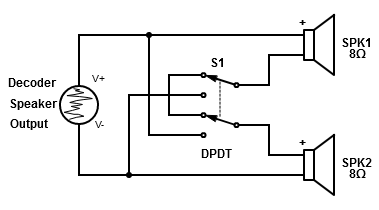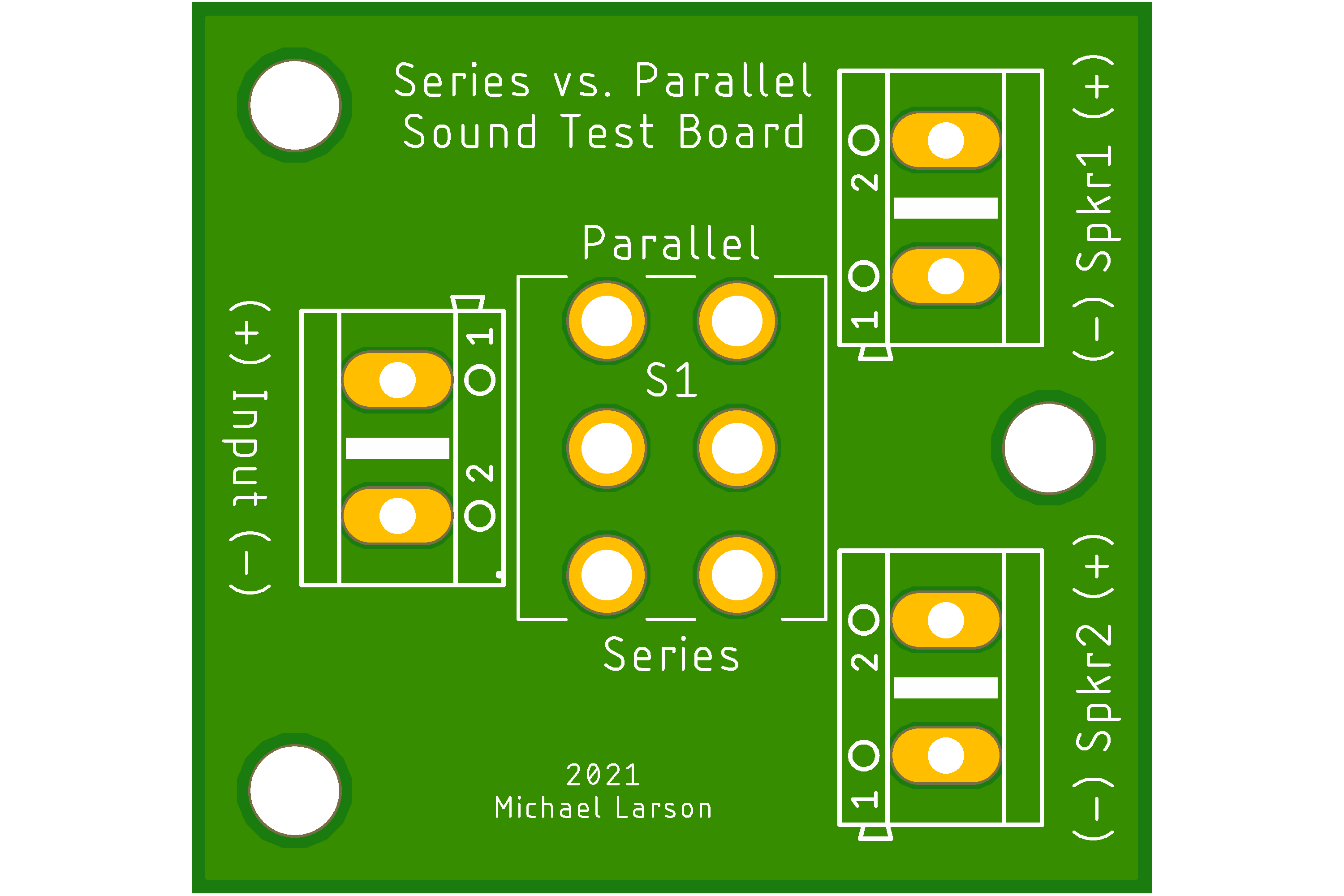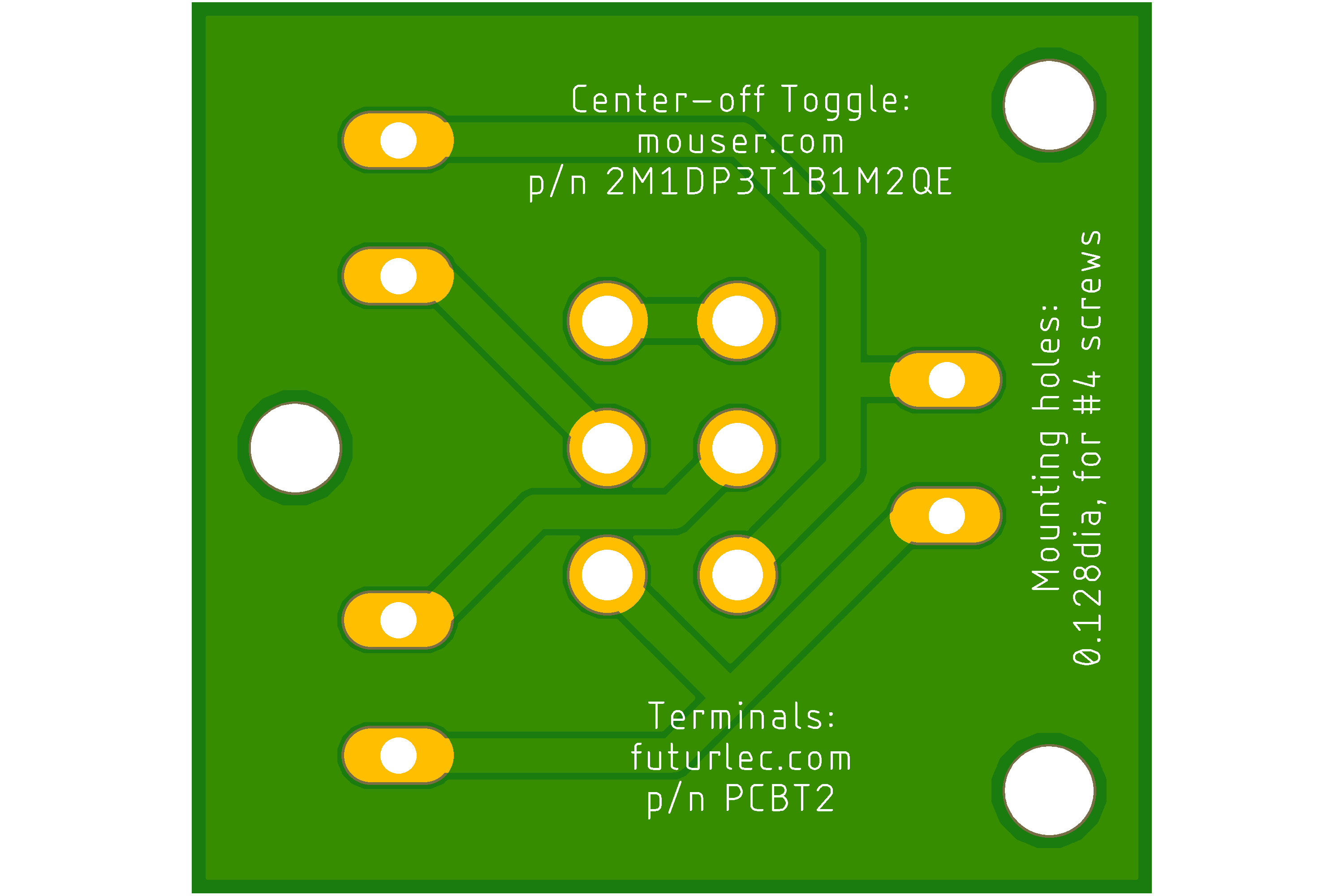Over time there has been fair amount of talk here about which way is best to wire a pair of speakers. I think the best answer is that it is pretty much subjective; what sounds good to one may not to another. For each of us, I think we should hear the difference for ourselves to make an informed decision.
I am not a fan of making and breaking connections of wires when I'm trying to determine which method is best, I find it slow and clumsy and it distracts me from the intended task. I want a way that will allow me to instantly switch between the two. Enter the DPDT toggle. The following schematic shows how to wire a DPDT switch to allow switching between series and parallel connections:

While not shown as such in the schematic, I have decided the safest choice of toggle is a center-off function. I can theorize that a toggle is break-before-make, but in an abundance of caution I know that a center-off toggle is absolutely BBM. If a make-before-break switch is used it will short the speaker output of the decoder, and even if it is only for a fraction of a second, we don't want that!
In the interest of making this as easy as possible to deploy, here is a PCB layout I put together.
Top:

Bottom:

I plan on building one for my workbench. If anyone else is interested please let me know. Bare PCB's are cheap ($2 + shipping), assembled is a bit more due to the cost of the toggle switch ($10 + shipping). I am not making any profit on these, the quoted prices are what they cost me for parts. If you are inclined to want to print your own boards, I have attached the Gerber files for you.
Michael